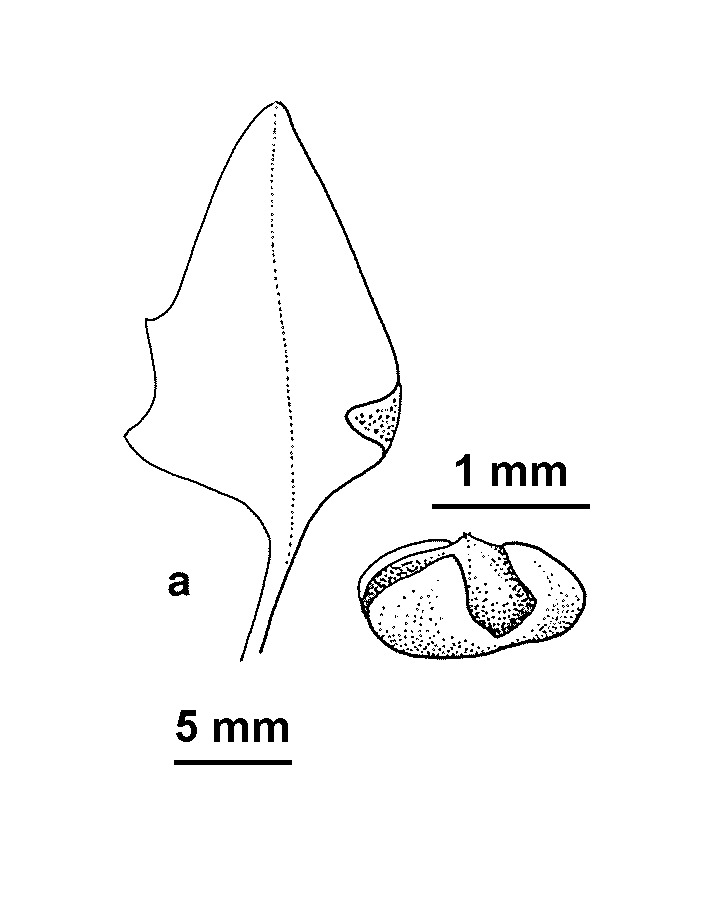Chenopodium glaucum
L. Glaucous GoosefootProstrate to erect annual, to c. 40 cm high. Leaves usually fleshy, petiolate, rhombic to ovate, occasionally hastate, 10–45 mm long, 8–30 mm wide, margins sinuate or irregularly lobed, rarely quite entire, upper surface glabrous, often with a brownish cast when young, lower surface mealy, grey or white. Flowers clustered in axils or in interrupted racemes or panicles; terminal flowers bisexual, tepals 3, less commonly 4 or 5, free, stamens mostly 1–3, rarely to 5, seed horizontal; lateral flowers female or bisexual with 1 stamen, seed erect. Seed circular, rounded at margin, c. 1 mm diam., reddish-brown to black. Flowers Dec.–May.
LoM, MuM, Wim, GleP, Brid, VVP, VRiv, MSB, GipP, OtP, WaP, Gold, CVU, DunT, EGL, WPro, HSF, HNF, OtR. Also WA, SA, NSW, Tas. Cosmopolitan. Frequently associated with saltmarshes of the coast and inland, occasional around lake margins and ephemeral water-bodies (often saline or subsaline) on heavier soils, mostly southern and western, with a disjunct occurrence at Lake Omeo near Benambra.
Chenopodium glaucum is a variable species, and it is probable that some forms of the species are native and other forms are naturalised. Among the potentially native elements is C. glaucum subsp. ambiguum, supposedly differing in having flowers in leafy racemes, and seeds with an obtuse margin. However, these features do not appear to be consistent in both European and native Australian specimens.
Walsh, N.G. (1996). Chenopodiaceae. In: Walsh, N.G.; Entwisle, T.J., Flora of Victoria Vol. 3, Dicotyledons Winteraceae to Myrtaceae, pp. 129–199. Inkata Press, Melbourne.
 Spinning
Spinning



